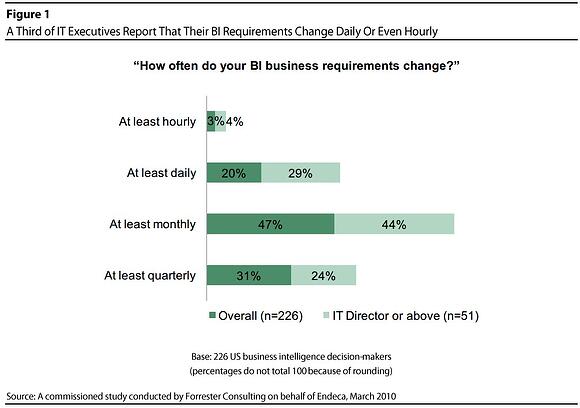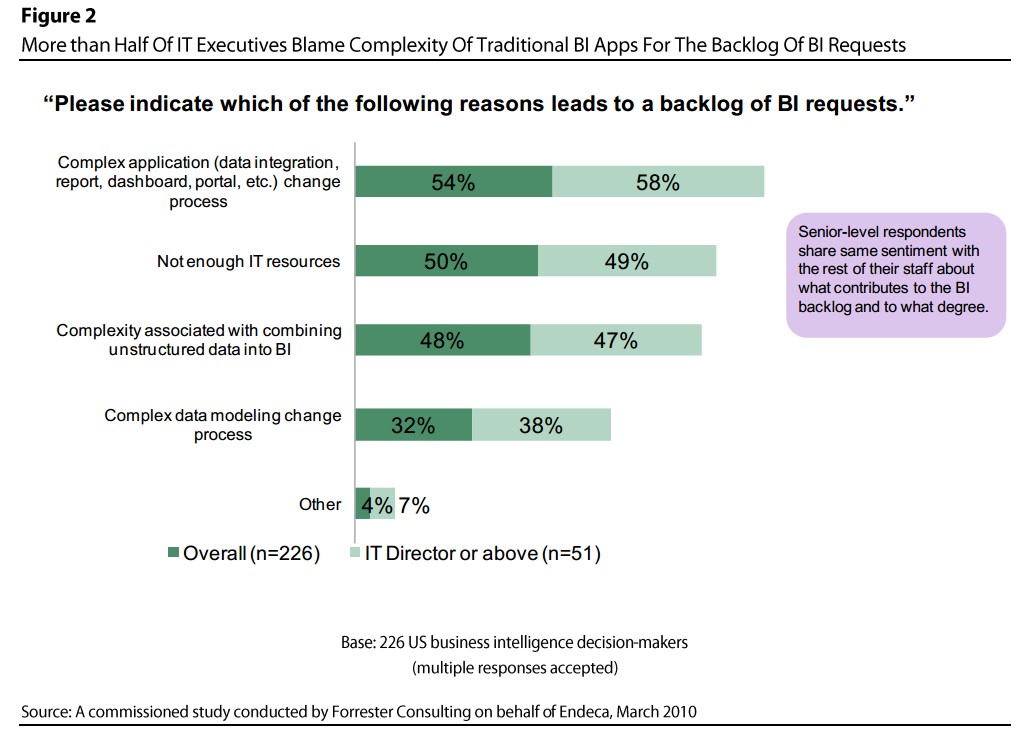In the 1980s, business intelligence (BI) applications were first introduced to address employees’ problem with the mountain of data. BI is increasingly effective in helping these workers transform large amounts of data into helpful and insightful information. Check out these 10 questions before deciding whether to implement an Agile BI system into your business:
1. Can you continuously react in time to constantly changing business requirements?
Since today’s business world moves at lightning speed, traditional BI applications are not fast or critical enough to deal with the initial requirement. For example, what if your system does not allow you to perform the newly required analysis while a new competitive threat has just appeared? Or, your company has just recruited a new CMO and he/she believes that your customers and prospects should be categorised and analysed based on a new attribute, e.g., a new psychographic like previous buying behaviour. Even if you spend hours adding that into your database, which will already be time-consuming and costly, your database administrators will tell you that it will take them many days, or even weeks to make the new queries work efficiently. You don’t want to fall behind and react slowly to new business requirements.

2. Are you tired of hearing that every new BI requirement results in changes to multiple programs and other components?
Most of the time, it is impossible to force the app to react on a dime to continuously changing business requirements. The number of BI components (data extraction, integration, cleansing, modelling, OLAP, reporting, dashboards, etc.) and a tight coupling (dependency) among them result in a heavy effort to create even a simple change. So when your CMO requests one additional attribute, it will not be just one or two simple places that will need change but rather a sequence of an ETL routine, a data quality routine, one or two staging database tables, aggregation, pivot and denormalisation routines, data warehouse and dimension tables, calculation routines for customer segmentation metrics, and at least several reports and dashboards where these new metrics will be applied.

3. Have your business analysts, developers and DBAs been stuck in meetings for months seeking new enterprise data models?
The proper BI design approach for most companies should start with collecting information about all data sources, documenting entities and attributes, and creating a data warehouse or data mart based on the information collected for gathering specifications for BI applications. Typically, the traditional software development life-cycle (SDLC) methodology is applied by IT in collecting functional BI application requirements. The common business user response to the IT question “Can you tell me what types of information you are looking to analyse?” is “I don’t know what my requirements will be tomorrow; I may want everything, so show me what you have available, and I’ll choose,” to which the answer will be: “We can’t just show you everything; it’ll take forever; let’s try to prioritise…” And so continues an endless circle of BI requirements leading to requirement analysis paralysis.
***
This is the first part of our series “Is it time to add Agile BI capabilities? 10 questions for CIOs”.
 English
English  Vietnamese
Vietnamese 

